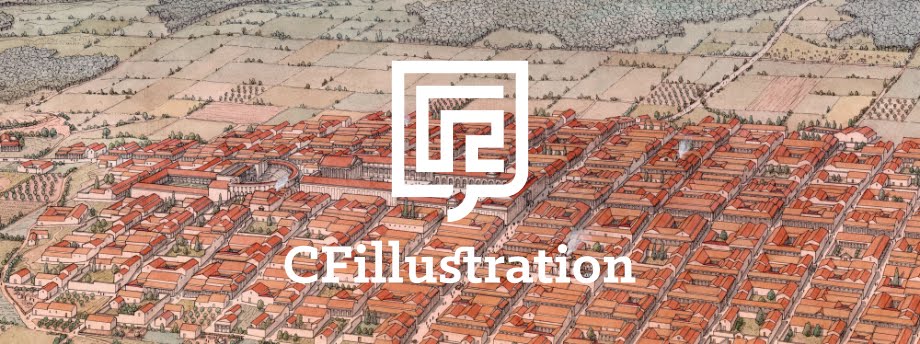Sé Catedral de Braga #2 | Cathedral of Braga #2
Monday, November 28, 2011
Friday, November 11, 2011
Série Fotogáfica "Espíritos de Pedra" | "Espíritos de Pedra" Photographic series
Sé Catedral de Braga #1 | Cathedral of Braga #1
A Sé de Braga, localiza-se na freguesia da Sé, na cidade de Braga, em Portugal. O seu altar é dedicado à Virgem Maria. Sede do Bispado fundado por São Tiago Maior (segundo a tradição), que aqui deixou como primeiro bispo o seu discípulo São Pedro de Rates. Por causa desta origem apostólica é considerada Sacrossanta Basílica Pimacial da Península Ibérica.E o seu Arcebispo, Primaz das Espanhas.Possui uma liturgia própria,a liturgia bracarense.
Assenta sobre as bases de um antigo mercado ou templo romano dedicado a Ísis (como atesta uma pedra votiva na parede leste), e muros de uma posterior basílica paleocristã.
Considerada como um centro de irradiação episcopal e um dos mais importantes templos do românico português, a sua história melhor documentada, remonta à obra do primeiro bispo, D. Pedro de Braga, correspondendo à restauração da Sé episcopal em 1070, de que se conservam poucos vestígios.
Nesta catedral encontram-se os túmulos de Henrique de Borgonha e sua mulher, Teresa de Leão, os condes do Condado Portucalense, pais do rei D. Afonso Henriques.
Nas dependências da antiga casa do Cabido, mandada construir no início do século XVIII, pelo Arcebispo D. Rodrigo de Moura Telesencontra-se o Tesouro Museu da Sé Catedral.
The Cathedral of Braga is one of the most important monuments in the city of Braga, in Northern Portugal. Due to its long history and artistic significance it is also one of the most important buildings in the country.
The bishopric of Braga was restored around 1071, after the city was back into Christian hands, and Bishop Pedro started to build a cathedral, consecrated in 1089 (only the Eastern chapels were finished). Starting in 1093, the County of Portugal was ruled by Count Henry of Burgundy who, together with Bishop Geraldo de Moissac, managed to convince the Pope to turn Braga into an archbishopric in 1107. The archbishop of Braga had power over a large region in Northwestern Iberia, including most of Portugal and part of Galicia, in today Spain.
Construction on the cathedral was then resumed and lasted until the middle of the 13th century, but the details are obscure. The original 12th century-building was built in the Burgundian Romanesque style of the monastery church of Cluny. It influenced many other churches and monasteries in Portugal in that period. In later times the cathedral was greatly modified, so that today it is a mix of romanesque, Gothic, manueline and baroque styles. Particularly important were the addition of new chapels and the entrance gallery in gothic style, the new manueline main chapel, and the various additions in baroque times like the towers, chapels and much inner decoration.
The original romanesque Western façade of the Cathedral of Braga has been totally suppressed, except for some archivolts and capitals of the main portal, heavily decorated with animal and human sculptured reliefs. The figures of one archivolt, with hens, foxes and a minstrel, may be telling a moralistic song like the Roman de Renart, of French tradition.
Thursday, November 3, 2011
Making Of - Illustrated Hun warrior and the Collapse of Roman Empire | Making Of - Guerreiro Huno e o Colapso do Império Romano
É com muito orgulho que tenho o prazer de mostrar pela primeira vez o meu processo de trabalho que habitualmente faço em ilustração.
Trata-se de um filme captado durante a execução de uma das ilustrações do meu próximo trabalho de ilustração editorial. O livro é sobre Braga e é da autoria de Maria José Meireles. Este livro será lançado no âmbito da Capital Europeia da Juventude (Braga, 2012).
Trata-se da representação de um guerreiro huno para uma passagem do texto que faz alusão às invasões bárbaras que assolaram o império romano.
I'm very proud to show for the first time my working process in illustration. It's a video clip about my next publishing work and it shows a time lapse of an illustration progress of a hun warrior to the final piece.
This book was written by Maria José Meireles and it will be released in European Youth Capital 2012.
Labels:
Bracara Augusta,
Braga,
César Figueiredo,
Civilização,
Civilization,
Desenho,
Digital,
Drawing,
Estudos,
Heritage,
Illustration,
Ilustração,
Reconstituição,
Reconstruction,
Roma,
Romans,
Rome,
Studies,
Video
Subscribe to:
Posts (Atom)






























